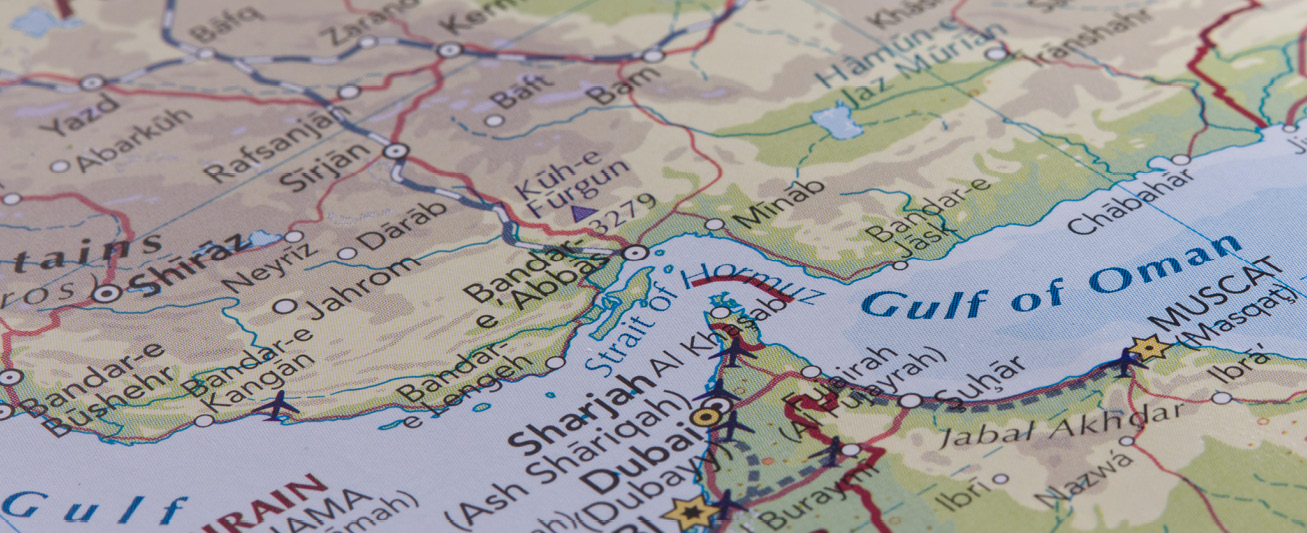
Ongoing wars and conflicts in the Middle East have presented significant risks to global oil supply chains, given the region’s pivotal role in oil production and export. The Middle East produces about a third of the world’s oil, with a substantial portion transported through the Strait of Hormuz. This strategic waterway is critical for the export of oil from major producers like Saudi Arabia and Iran, and approximately 20%-30% of global oil supply passes through it. Recent geopolitical tensions and conflicts, including those involving Iran and Saudi Arabia, have heightened concerns over potential disruptions.
The volatile situation in the region, marked by military confrontations, political instability and threats to critical oil infrastructure, poses a constant threat to the stability of oil exports. The Strait of Hormuz’s irreplaceable position as a choke point means that even minor disruptions can lead to significant economic and political repercussions worldwide. The fragility of this supply chain underscores the importance of understanding the risks associated with the ongoing conflicts in the Middle East.
The Strategic Importance of the Strait of Hormuz
The Strait of Hormuz is a narrow passage connecting the Persian Gulf to the Arabian Sea, and it serves as one of the most critical choke points for the global oil supply. Major oil producers like Saudi Arabia, Iran, Iraq and the United Arab Emirates rely heavily on this route to export their oil to international markets around the world.
The significance of the Strait of Hormuz is highlighted by its geographic and economic significance. As the primary maritime route for oil tankers leaving the Persian Gulf, any disruption in this corridor can lead to substantial delays and increased shipping costs, which, in turn, can cause global oil prices to spike. The narrow width of the strait, at just 21 miles at its narrowest point, makes it vulnerable to blockades or military conflicts, exacerbating the risk of supply chain disruptions.
Potential Disruptions & Consequences
Potential disruptions in the Strait of Hormuz pose severe risks to global oil supply chains, with far-reaching economic and political consequences. Geopolitical tensions, particularly those involving Iran and Saudi Arabia, have the potential to escalate into conflicts that could jeopardize the stability of oil exports. Military confrontations, sabotage and attacks on key infrastructure — such as oil tankers and pipelines — are significant threats.
For example, in recent years, there have been several instances of tanker attacks and drone strikes targeting oil facilities in the region, highlighting the vulnerability of the supply chain. A significant disruption could halt or severely limit the flow of oil through the Strait, leading to immediate shortages in global markets that would cause oil prices to surge, exacerbate inflationary pressures worldwide and potentially destabilize global economies.
Furthermore, the lack of alternative routes for transporting such large volumes of oil makes the Strait of Hormuz irreplaceable. No other passage or pipeline network can match its capacity, meaning that even a temporary blockade could lead to a severe energy crisis. Countries heavily dependent on Middle Eastern oil, including major economies like China, Japan and India, would face acute energy shortages, leading to potential economic slowdowns and increased geopolitical tensions.
Economic Landscape & Oil Prices
The economic landscape is marked by rising costs and inflation, significantly influencing oil prices. According to the U.S. Energy Information Administration (EIA), the cost of extracting crude oil has increased exponentially over the past five years, driven by higher labor and equipment costs. This trend shows no signs of reversing, indicating sustained upward pressure on oil prices.
Forecasts suggest modest but steady increases in oil prices over the coming months. Moreover, the EIA predicted that Brent crude oil prices will average $85 per barrel in the second half of 2024, up from around $81 per barrel in July — the EIA’s latest update as this issue went to print. Persistent inflation, projected to remain above 3% annually by the Federal Reserve, is expected to contribute to these rising prices.
The global demand for oil is also set to grow, with the International Energy Agency (IEA) this spring anticipating an increase of 1.4 million barrels per day in 2024. Coupled with limited spare capacity among major producers, these supply-demand dynamics support a bullish outlook for oil prices. Businesses reliant on energy will face higher input costs, which are likely to be passed on to consumers, further fueling inflation. Consequently, the global economic landscape remains tightly intertwined with the stability and pricing of oil, underscoring the importance of strategic planning and investment in energy security for nations and industries alike.
Impact on Global Inflation, Business Costs & Long-Term Price Trends
As oil is a fundamental input in various industries, increased oil prices translate directly to higher production costs. Businesses facing elevated energy expenses will likely pass these costs onto consumers, resulting in higher prices for goods and services. This dynamic significantly contributes to overall inflation, already a pressing concern in the current economic landscape.
As oil prices climb, the cost of transportation, manufacturing and logistics also rises, straining profit margins and potentially leading to reduced economic growth. Small- and medium-sized enterprises are particularly vulnerable, as they often lack the financial resilience to absorb these increased costs.
Long-term price trends suggest that the era of relatively cheap oil is over. With the IEA forecasting a 1.4 million barrels-per-day increase in global oil demand in 2024 and limited spare capacity among major producers, the supply-demand imbalance is poised to drive prices higher. Consequently, businesses and economies must adapt to a reality where energy costs are a significant and persistent factor. Strategic measures — such as hedging oil price exposure and investing in energy efficiency — will be crucial for mitigating these impacts and ensuring economic stability.
Mitigation Strategies & Encouraging Domestic Energy Production
Given the volatility of global oil supply chains, especially with the ongoing conflicts in the Middle East, it is crucial to adopt effective mitigation strategies and encourage domestic energy production to ensure economic stability. One primary strategy is hedging oil price exposure using financial instruments. By locking in prices, businesses can protect themselves against sudden spikes in oil costs, stabilizing their expenses and shielding their profit margins from market volatility.
Exploring alternative energy sources is another critical approach. While the transition to renewable energy is a long-term solution, investing in technologies like solar, wind and biofuels can reduce dependency on oil. However, the viability of these alternatives is still limited, making it essential to manage current oil consumption more efficiently. Enhancing energy efficiency in industrial processes, transportation and infrastructure can significantly reduce overall oil demand.
Encouraging domestic energy production is pivotal. Using local resources not only reduces reliance on imported oil but also strengthens national security and supports economic growth. These efforts help mitigate risks associated with international supply chain disruptions and contribute to a more resilient energy framework.
While the Middle East remains a critical player in the global oil market, proactive measures such as hedging, enhancing energy efficiency and boosting domestic production are essential. These strategies will help reduce the risks posed by geopolitical tensions and ensure a stable and secure energy future.


